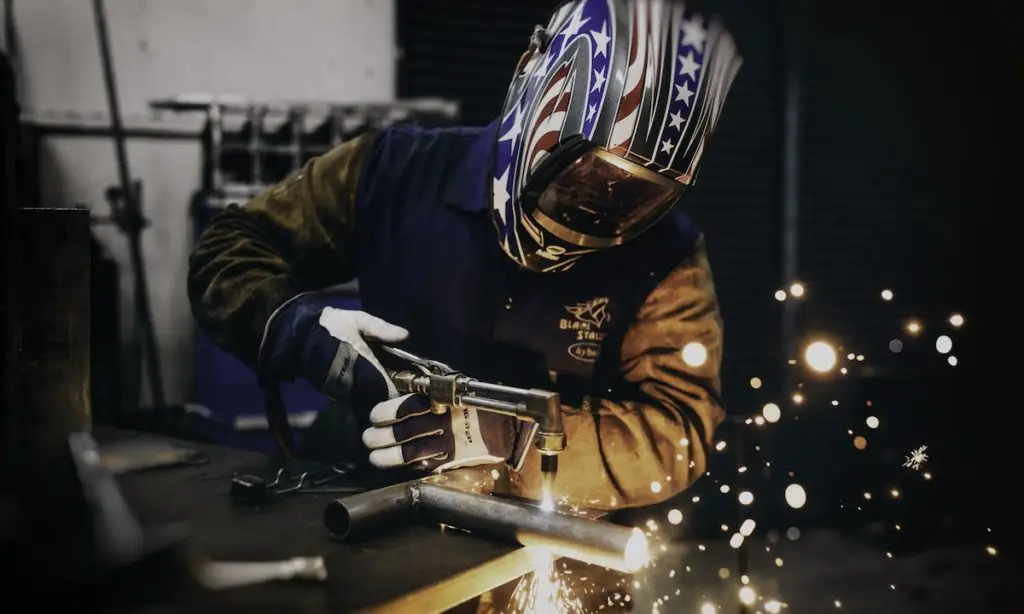Welding generates strong electromagnetic fields, which could prove risky for someone with a pacemaker. It’s even worse when the pulsing rate matches your pacemaker and can prove hazardous.
If you have a pacemaker and you’re wondering how you can shield a pacemaker when welding, you’re in the right place. In this article, we’ll answer all your questions about welding with a pacemaker and how you can protect your pacemaker during the welding process.
Can You Weld with a Pacemaker?
It’s not recommended. Welding usually exposes the pacemaker to high levels of electromagnetic heat and radiation. This could interfere with the proper operations of the pacemaker. Pacemakers work to monitor and regulate the heart’s electrical activity.
Welding could cause the pacemaker to malfunction, which could be life-threatening for cardiac patients.
If you own a pacemaker and want to weld, you must follow certain precautions, like wearing a protective shield. Speaking to your doctor to determine whether welding is acceptable for your health is also essential.
How Does Welding Affect a Pacemaker?
Pacemakers are implanted under the skin near the heart to regulate the heartbeat effectively. There are many ways welding can affect the functioning of a pacemaker, and they’re outlined below.
- Welding produces a high level of electromagnetic radiation. This could interfere with the signals sent from the pacemaker to the heart and back. Such interference could cause the pacemaker to malfunction, resulting in symptoms like fatigue, dizziness, or even a loss of consciousness.
- Additionally, the high temperature produced by welding can cause the metal in the welding equipment to become magnetic. This could create a strong magnetic field that interferes with the pacemaker’s circuitry and sensors.
- The welding process could also cause pacemakers problems, like inaccurate readings. It could also result in dangerous malfunctions.
Overall. It’s essential to take proper precautions when you have a pacemaker, and you’re working with welding equipment. It might be best to avoid welding entirely if the risks become too great.
Can You Use a Laser Welder with a Pacemaker?
Laser welding is safer for individuals with pacemakers than the traditional welding process. Laser welding results in less electromagnetic radiation and doesn’t result in magnetic fields.
Despite being safer than most welding processes, taking crucial precautions when using a laser welder is still essential. This is because even though the risk of electromagnetic interference is low, it is still dangerous. The laser can still interfere with the pacemaker’s signals and cause it to malfunction.
To minimize the risks resulting from using a laser welder, people with pacemakers should also consult with their doctor before using a laser welder. There might be precautions you can take to avoid the potential risks associated with laser welding.
This could include standing afar from the welding equipment or avoiding welding in areas with strong magnetic fields. By taking precautions, you can minimize the risk of interference and safely use laser welding equipment.
How Can I Shield My Pacemaker from the Effect of the EMF Generated When Welding?
Now that it’s clear that electromagnetic fields (EMF) can interfere with the proper function of a pacemaker, it’s essential to take precautions when welding with a pacemaker. The precautions listed below will ensure the welding process doesn’t disrupt the pacemaker and heart signals.
1. Wear a Protective Shield
One of the best ways you can shield your pacemaker from the effect of the EMF generated during welding is by wearing a protective shield. A protective shield over your pacemaker will effectively block the electromagnetic field created during welding.
Most protective shields are made from non-conductive materials like rubber or plastic. However, you can usually customize them to fit your pacemaker.

2. Maintain a Safe Distance
Another option you can explore is maintaining a safe distance from the welding equipment during the welding process. This could help to minimize your exposure to EMF. The standard distance to maintain during welding when you have a pacemaker is at least three feet. This distance would effectively reduce the risk of exposure.
3. Minimize Exposure Time
Although getting carried away with the welding process is easy, you should limit the time you spend near the welding equipment. Cutting down on welding time will minimize your overall exposure to the EMF. This is a safe way to shield your pacemaker because the longer you’re exposed to the EMF, the higher the risk of interference.
4. Consider Different Welding Processes
Another option you have to shield your pacemaker from the effect of EMF generated during the welding process is to consider using alternative welding processes. Welding methods like ultrasonic and laser welding generate far less EMF than stick welding, TIG, or MIG welding. They’re also less likely to interfere with your pacemaker, making them a safe option.
5. Keep the Welding Cables Close
One way to control the electromagnetic field generated during welding is by keeping the welding cables close together. You can twist them together if that’s possible. Whatever you do, keep them as far away from your pacemaker as possible.
6. Consult with the Doctor
Before you start welding, it’s always best to talk to the doctor about the pacemaker and learn the risks associated with the welding process. Most times, your doctor will inform you if it’s too dangerous or guide you on the best ways to protect your pacemaker during welding.
Each pacemaker is different, so talking to the doctor is your best choice. Your doctor can help you develop a plan tailored to your needs and pacemaker. By taking the right precautions listed above, you can reduce the risk of interference and protect your pacemaker from the effect of the EMG generated when welding.
Conclusion
If you have a pacemaker, it’s always best to take the right precautions to protect yourself from electromagnetic fields while welding. We’ve reviewed the best protections to keep you safe above. However, it’s recommended that you consult with a doctor first to learn the risks and the best safety precautions you can take. By exploring the precautions above, you can safely weld and reduce the risk of interference with your pacemaker.


Add comment